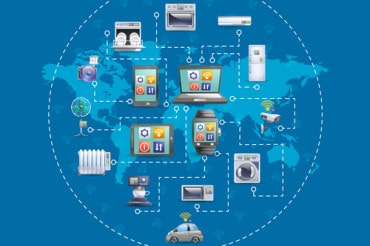
A look forward to the future of RPA this year with Nathaniel Davidson, Chief Technology Officer at Kryon.
As part of our 2019 predictions series, we sat down with Nathaniel Davidson, Chief Technology Officer at Kryon, He looks back at the key developments within the robotics process automation (RPA) industry over the last 12 months and looks forward to the coming year, where RPA can expect better consumer-driven penetration.
There has been tremendous growth and opportunity for this industry – in my opinion, more than ever before. Global spending on RPA software is estimated to reach $680 million by year’s end, an almost 60 percent increase year over year, according to the latest from Gartner.
Biggest fallacies in the robotics industry right now
The biggest fallacy is that robots will replace the human role. While there is a fear that emerging technologies will pose a threat to existing roles, in actuality this could not be more misguided. In a recent survey Kryon conducted of 1,000 employees across US enterprises, over 60% agree that software robots and people could work successfully side by side. A majority of respondents indicated they would not only embrace automation to relieve them from burdensome, time-consuming tasks, but they also believe RPA would enable them to contribute greater value and innovation to their organizations.
The Future of Jobs Report finds that eighty-five percent of corporations plan to retrain existing talent to extract the potential benefit from initiatives such as intelligent robotics. Likewise, 82% anticipate hiring new personnel with applicable tech backgrounds in support roles. Proficiency in new technologies is only one part of the equation, as “human” skills such as creativity, brainstorming, and negotiation will likewise retain or increase their value, as will attention-to-detail, flexibility and multifaceted problem-solving.
In 2019, consumers will follow industry and begin to better adopt RPA
Consumerization of automation will act as the enabler for mass adoption and simplicity of RPA development. Kryon’s industry-leading Visual Learning approach, based on machine vision, will win as the method that requires the least skillset to perform. Inevitably, consumers want that same convenience, ease, and reliability in their personal lives as enterprises now have access to. In 2019, it will only become increasingly available in more and more consumer scenarios. Gartner recently released a survey that spotlights consumers as the most likely to use artificial intelligence to help save time and money. Forty-seven percent would use AI if it gave them easier access to information, for example in travel, transportation directions and everyday details like that.
Overall predictions for the robotics global market for 2019
RPA and the consumerization of automation will lead the merging of three technologies in 2019: business process management suite (BPMS), if this then that (IFTTT) and virtual assistants and performance management systems. Integration systems such as BPMS, IFTTT and RPA are all variants of automation. Virtual Assistants are the sister technology of RPA. Virtual assistants are extremely limited in what they can do in terms of out-of-the-box functionality (beyond: Siri, what is the weather); and RPA is missing an intuitive user-experience to interact with the person it is designed to help. Virtual assistants will identify the problem, predict the best outcome, and aid the user by completing the task automatically.
This symbiotic relationship will merge the two technologies into a robot per employee best outcome relationship and evolve virtual assistance into standard real-assistance. Moreover, performance management systems such as KPI dashboards and business analytics require manual configuration to collect their data. Future systems will tap into process discovery analytics, with practically zero back-end manual effort. Accurate real-time data on all processes and all business applications will provide business users a view of continuous operational improvement, operational efficiency, identification of weak spots, and optimization through automation and guided assistance to onboard, reduce error and improve compliance.
I think it’s also important to watch augmented reality technology for professionals. AR glasses in the enterprise will overlap with virtual assistance as a new approach to interact with professional users, alert on escalations, and trigger automated back-office procedures in the business setting.
Overall, we’ll see more and more companies gravitate towards incorporating some sort of RPA into their business model. It is really obligatory if a business is to incorporate full traceability and visibility into its processes. Analysts have forecasted that by 2020 nine out of ten business will adopt RPA – that progress will be made all of 2019.
(Editor’s Note: Where did the year go? 2019 is almost upon us, and the brightest minds in the real-time analytics space are looking forward to the new year and taking their guess at where they think this space is going. Help us expand the discussion and build out the future of real-time by joining the RTInsights Brain Trust)




























